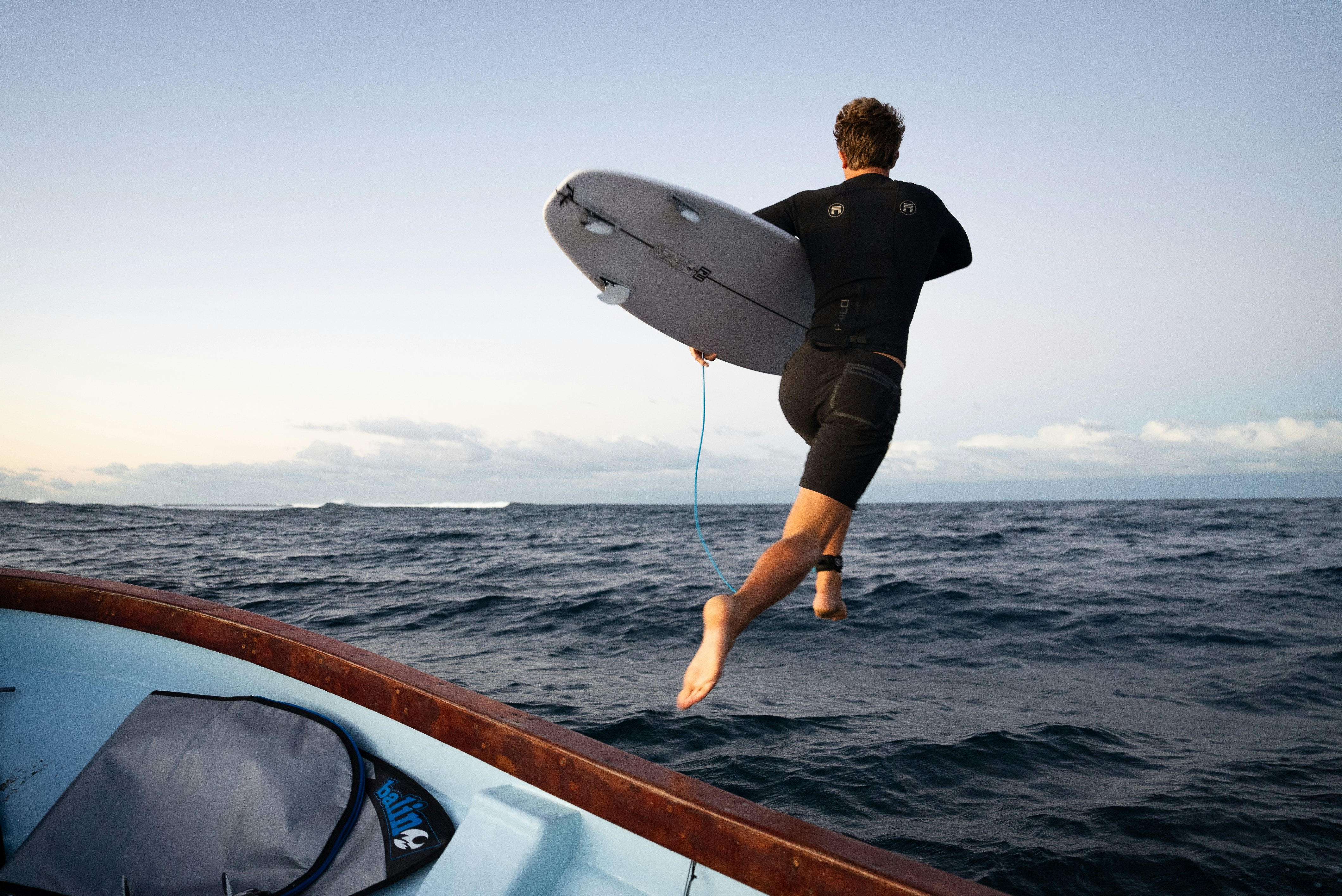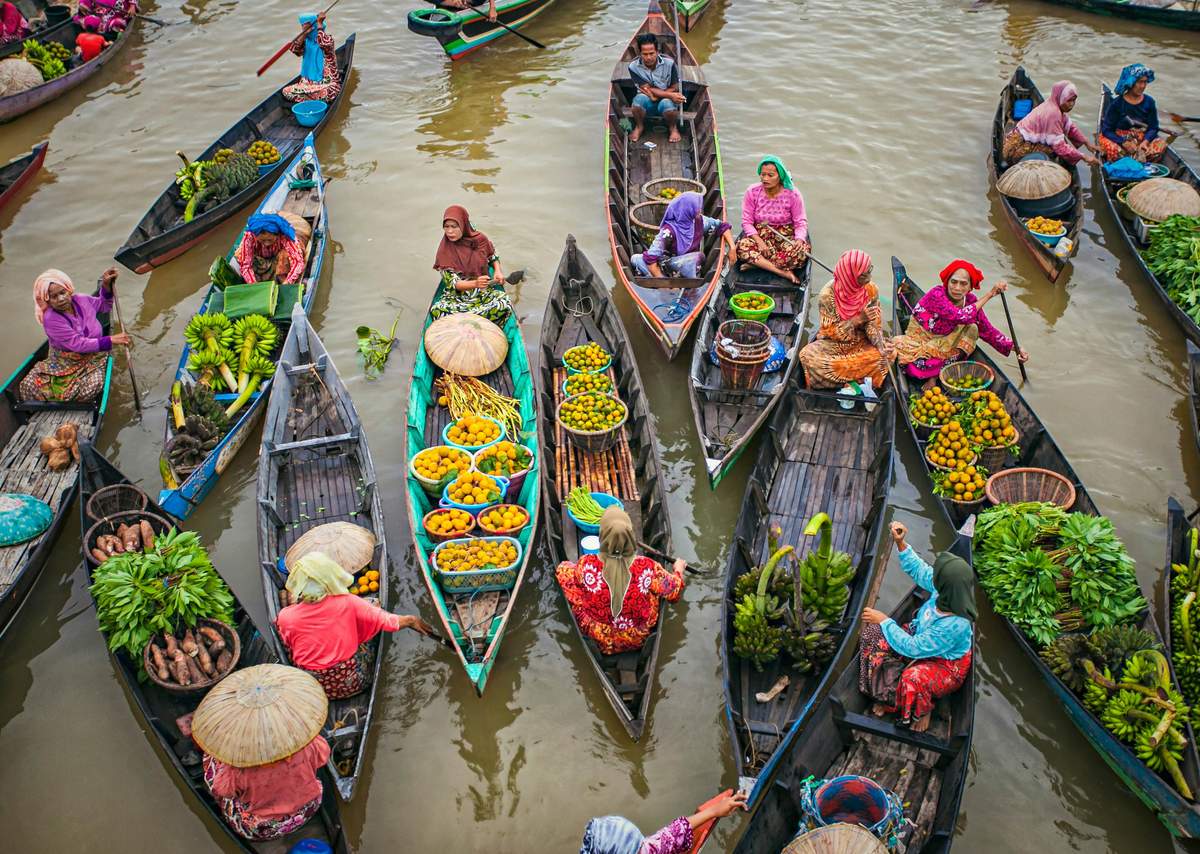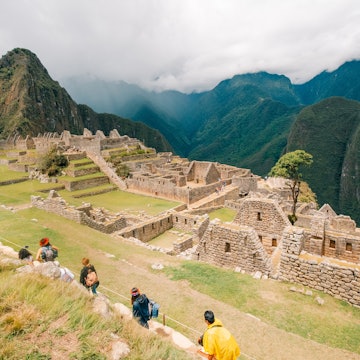
Fiji or Bali: which should you pick to chase your island dreams?



Waterfalls in the highlands of Bali, or the flat beaches of Waya Island, Fiji? Left: iStock. Right: Chris Chen for Lonely Planet
Few destinations are as evocative as Fiji and Bali.
Taking up major real estate in most travelers’ imaginations – especially those of Australians and New Zealanders during the winter months – these two places bring visions of endless beaches, adrenaline-pumping surfing waves, tropical forests and unique cultural experiences. Who wouldn’t want to book tickets to either?
Unfortunately, difficult decisions must sometimes be made, and travelers need expertise to weigh the merits of these two vacation dreamlands. So we’ve asked a pair of passionate experts to make the case for fascinating Fiji and beautiful Bali.

Fall for Fiji
Adventure writer and photographer Chantae Reden rarely strays far from the coastline. She has ridden a motorcycle across Timor-Leste, scuba dived with bull sharks in Fiji and swam beside humpback whales in Tonga, among other escapades.
The hug of warm, tropical weather greets you as soon as you step off the tarmac in both Bali and Fiji – but you won’t find swarms of drivers shouting for your attention at the latter’s main international airport. (Of course, there’s always a taxi driver close by when you need one.) Fiji’s relaxed hospitality starts as soon as you arrive, and continues until you hear the sweet sound of “Isa Lei,” the islands’ heartfelt farewell tune.
I’ve called the 333-island nation of Fiji home for the past seven years, and its laid-back and fun-loving bula spirit is truly infectious. Though Bali is also close to my heart (I wrote a guidebook about the Island of the Gods, after all), Fiji deserves to be your next island escape.
Pristine nature
Fiji’s natural wonders are clean and rarely crowded. Fiji has fewer than a million residents spread across its hundreds of islands, and traffic only truly exists in the cities where few tourists ever venture. Unlike Bali, whose beaches suffer from crowds and plastic pollution, Fiji’s stretches of white sand are pristine all year long.

Solitude in nature is easy to find in Fiji. Village custodianship over Fijian lands make waterfalls and trekking trails a bit more challenging to access without a guide than those in Bali – but the effort is well worth it. You can climb to Fiji’s tallest peak, Mt Tomanivi, on the island of Viti Levu, or search for Fiji’s rare tagimoucia flower on the island of Taveuni, without encountering another person. Venture to the Lau Islands, a region without any formal hotels or airports that’s only accessible by boat, and you’re unlikely to come across any other tourists at all.
As for the hotels: they’re spread throughout the islands, which means there’s no need to jostle for a spot in the shade or ward off persistent beach vendors. Even the local markets are a pleasant place to visit, with most merchants adopting a take-it-if-you-like, no-worries-if-not attitude about their heaps of colorful fresh produce.
If you have little travelers to please, Bali and Fiji are both top-tier destinations for families. But Fiji takes the lead when it comes to child-friendly culture and entertainment. I’ve seen hotel security guards abandon their post to instigate a game of touch rugby for kids. Traveling around the islands with my infant twins has given me a glimpse of what it’s like to be treated like a celebrity. Most resorts have kids’ clubs and affordable nannies; parents and children can each get the vacation of their dreams.

Waves worth the journey
Both Bali and Fiji host championship surf contests at their world-class waves. And while I can’t deny the epicness of Bali’s waves of Uluwatu and Padang Padang, Fiji is certainly not swell-shy, with its famous Cloudbreak and Restaurants breaks. Most of Fiji’s waves require a boat ride to reach – unlike the easy access of Bali – but this serves to minimize the crowds at waves best suited for experienced surfers only.
Below the water, you can peer through your dive mask and come eye to eye with sea life both big and small. Manta rays, sea turtles, hundreds of species of reef fish and reef sharks make regular appearances around Fiji’s vibrant hard- and soft-coral reefs. It’s also one of the few places in the world where you can dive with bull sharks, without a cage – if you dare.
Fijian hospitality extends beyond resort doors. It’s customary to enter a village with a sevusevu, a traditional gift like yaqona (pepper root), then be welcomed with warmth. Spend the day sipping coconut shells filled with kava (the drink made from ground pepper root), dancing and feasting on Fijian fare of just-caught fish, taro leaves cooked in coconut cream, plus smoked meats. On the weekends, follow the harmonic hymns to the local church or join in on Hindu celebrations taking place in Indo-Fijian communities around Suva, Nadi and Labasa.
No matter where you go, expect a hearty greeting of “Bula!” and genuine warmth. Bali simply can’t beat that.

Bet on Bali
Mark Eveleigh lived in Bali for a year in 2022 – and has since returned regularly to a West Balinese village where he has some well-stacked bookshelves and a shed crammed with surfboards.
Sometimes the best things come in small packages. I fell in love with the diminutive island of Bali 20 years ago, and have since explored every corner of the island. Even now, I remain stunned by the variety on a land mass less than a third the size of Fiji.
Most people know Bali for its world-famous beaches and celebrated resorts, including some of the most luxurious (and expensive) on the planet. Yet you don’t need an infinite budget to enjoy Bali’s pleasures: a bungalow overlooking a deserted beach can go for $20.
Its selling points have caught on with the crowds, it’s true. Yet only a minority of visitors – even among veteran expats – ever venture beyond the celebrated art and yoga heartland around Ubud. Venturing just a bit farther afield, you’ll find yourself among dense jungle valleys and vast paddy landscapes that ascend, like a giant’s staircase, toward the sacred peaks.

Beauty beyond the beach
Don’t assume Bali is just sand. A half-day excursion (quicker on a rented scooter) takes you to the solitude of the highlands. Bali’s spectacular volcanic landscapes stretch westward from sacred Gunung Agung (at 3412m / 11,195ft, it’s well over double the altitude of Fiji’s highest point) past smoldering Batur to the rarely visited rainforests of Batukaru Mountain.
You don’t have to seek out culture on the Island of the Gods; it’s literally everywhere, with the vibrant rituals of Balinese Hinduism enacted in small villages, the backpacker hangouts of Kuta and around the trendy beach clubs of Seminyak alike. Spend time exploring farther and you might even feel some similarities with far-off Fiji. As in Fijian traditional communities, rural villages are governed primarily by a community of elders known as the banjar. At Mekare-kare festivals, where the young warriors of Tenganan fight to draw blood with pandan “swords,” or during the daily launching of jukung (outrigger fishing canoes) into the pounding waves, it would be easy to imagine that you’re on a Pacific Island. Bali’s connection to the sea is especially evident in the fishing town of Perancak, the anchorage for more than 100 selerek, brightly painted, 20m (66ft)-long fishing vessels.
The western third of the island remains virtually unknown to outsiders, and few tourists (or even islanders, for that matter) realize that uninhabited jungle and seemingly endless beaches that rarely see a foreign footprint are the norm here. You could walk for hours along the beautiful curve of wave-pounded volcanic sand that is Yeh Leh Beach – just 50km (31 miles) from the international airport – without meeting anyone other than a handful of local fishermen.

Take to the water
In Fiji, you need a boat to reach just about any decent surfing wave. In Bali, meanwhile, instantly accessible surf breaks have made spots like Uluwatu and Canggu world-famous (perhaps a little too famous). If you want to break away from the pack, count on the low-key surf towns of Keramas, Balian and Medewi – the last town being the gateway to countless, entirely unsurfed beach-break waves along the southwest coast.
If you’re drawn to calmer waters, Bali has excellent diving and snorkeling, with sightings of sharks, turtles, barracudas, dolphins and even the occasional whale shark off the tranquil north coast. Inland, you’ll find adventure activities in the form of hiking, mountain biking, horseback riding, quad-biking and even white-water rafting. You can walk with rare pink buffaloes in Pekutatan, or attend Jembrana’s dramatic (if somewhat gory) mekepung buffalo-chariot races. In West Bali National Park, you can take jungle hikes amid large herds of wild sambar deer, gibbon-like ebony-leaf monkeys and flocks of Bali starlings (the island’s own “bird of paradise”).
If the notion of hopping from tropical island to tropical island draws you to Fiji and the South Pacific, keep in mind that Bali is but a speck in the vast, dense Indonesian archipelago. Lombok and the Gilis are on every backpacker bucket list, sure – but there are 17,500 other Indonesian islands waiting to be explored.
Who knows? One of them might even be as enchanting as Bali.















